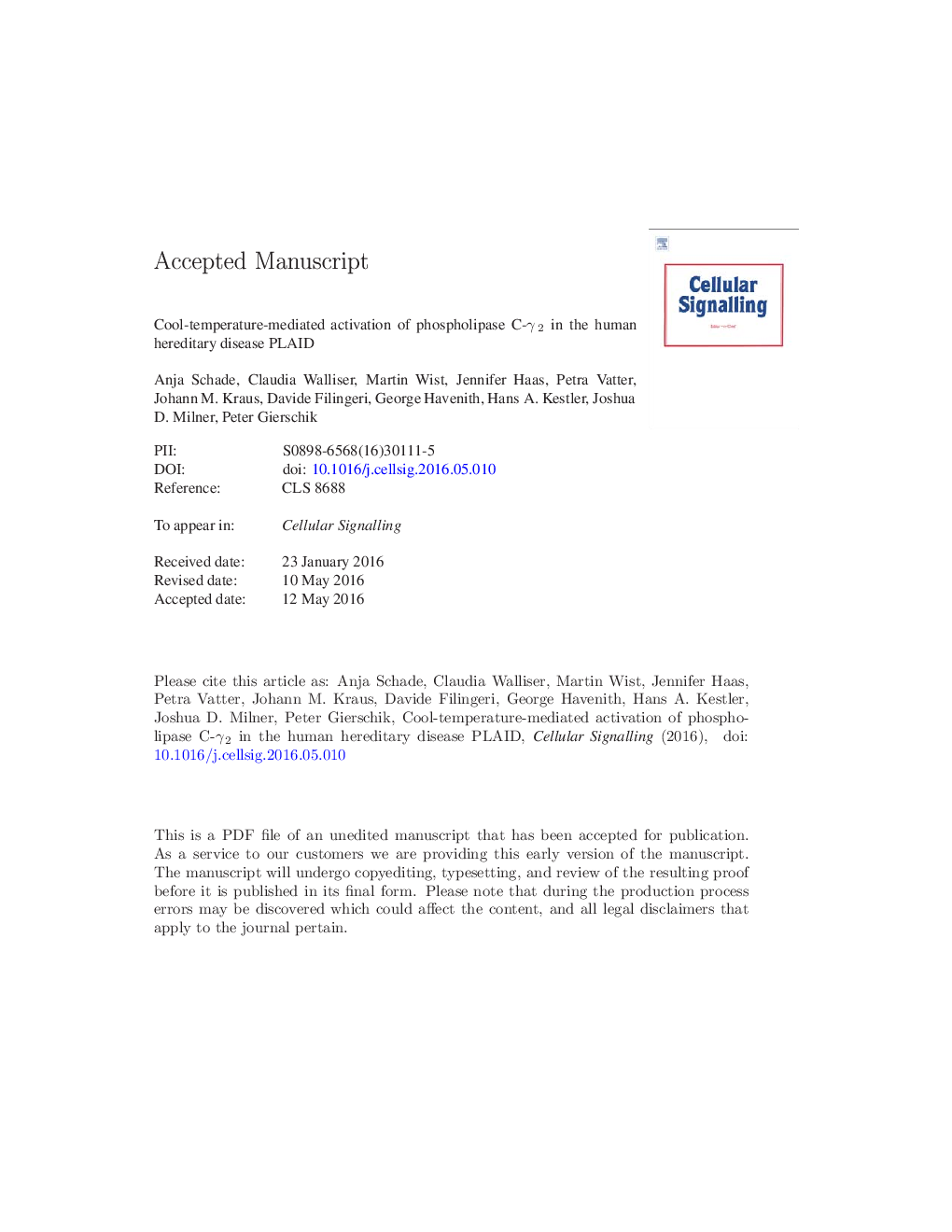| Article ID | Journal | Published Year | Pages | File Type |
|---|---|---|---|---|
| 10815025 | Cellular Signalling | 2016 | 44 Pages |
Abstract
Deletions in the gene encoding signal-transducing inositol phospholipid-specific phospholipase C-γ2 (PLCγ2) are associated with the novel human hereditary disease PLAID (PLCγ2-associated antibody deficiency and immune dysregulation). PLAID is characterized by a rather puzzling concurrence of augmented and diminished functions of the immune system, such as cold urticaria triggered by only minimal decreases in temperature, autoimmunity, and immunodeficiency. Understanding of the functional effects of the genomic alterations at the level of the affected enzyme, PLCγ2, is currently lacking. PLCγ2 is critically involved in coupling various cell surface receptors to regulation of important functions of immune cells such as mast cells, B cells, monocytes/macrophages, and neutrophils. PLCγ2 is unique by carrying three Src (SH) and one split pleckstrin homology domain (spPH) between the two catalytic subdomains (spPHn-SH2n-SH2c-SH3-spPHc). Prevailing evidence suggests that activation of PLCγ2 is primarily due to loss of SH-region-mediated autoinhibition and/or enhanced plasma membrane translocation. Here, we show that the two PLAID PLCγ2 mutants lacking portions of the SH region are strongly (> 100-fold), rapidly, and reversibly activated by cooling by only a few degrees. We found that the mechanism(s) underlying PLCγ2 PLAID mutant activation by cool temperatures is distinct from a mere loss of SH-region-mediated autoinhibition and dependent on both the integrity and the pliability of the spPH domain. The results suggest a new mechanism of PLCγ activation with unique thermodynamic features and assign a novel regulatory role to its spPH domain. Involvement of this mechanism in other human disease states associated with cooling such as exertional asthma and certain acute coronary events appears an intriguing possibility.
Keywords
SH3Inositol phospholipidphospholipase C-γ2SPPHPtdInsSH2PCIPLCBCRTrpRACPhosphatidylinositol 4-phosphatePtdIns(4)PPtdIns(4,5)P2amino acidPleckstrin homology domainSrc homology domain 2Src homology domain 3phosphatidylinositolphosphatidylinositol 4,5-bisphosphateAutoinhibitionRAS-related C3 botulinum toxin substratetransient receptor potentialPlaidControlB cell receptor
Related Topics
Life Sciences
Biochemistry, Genetics and Molecular Biology
Biochemistry
Authors
Anja Schade, Claudia Walliser, Martin Wist, Jennifer Haas, Petra Vatter, Johann M. Kraus, Davide Filingeri, George Havenith, Hans A. Kestler, Joshua D. Milner, Peter Gierschik,
